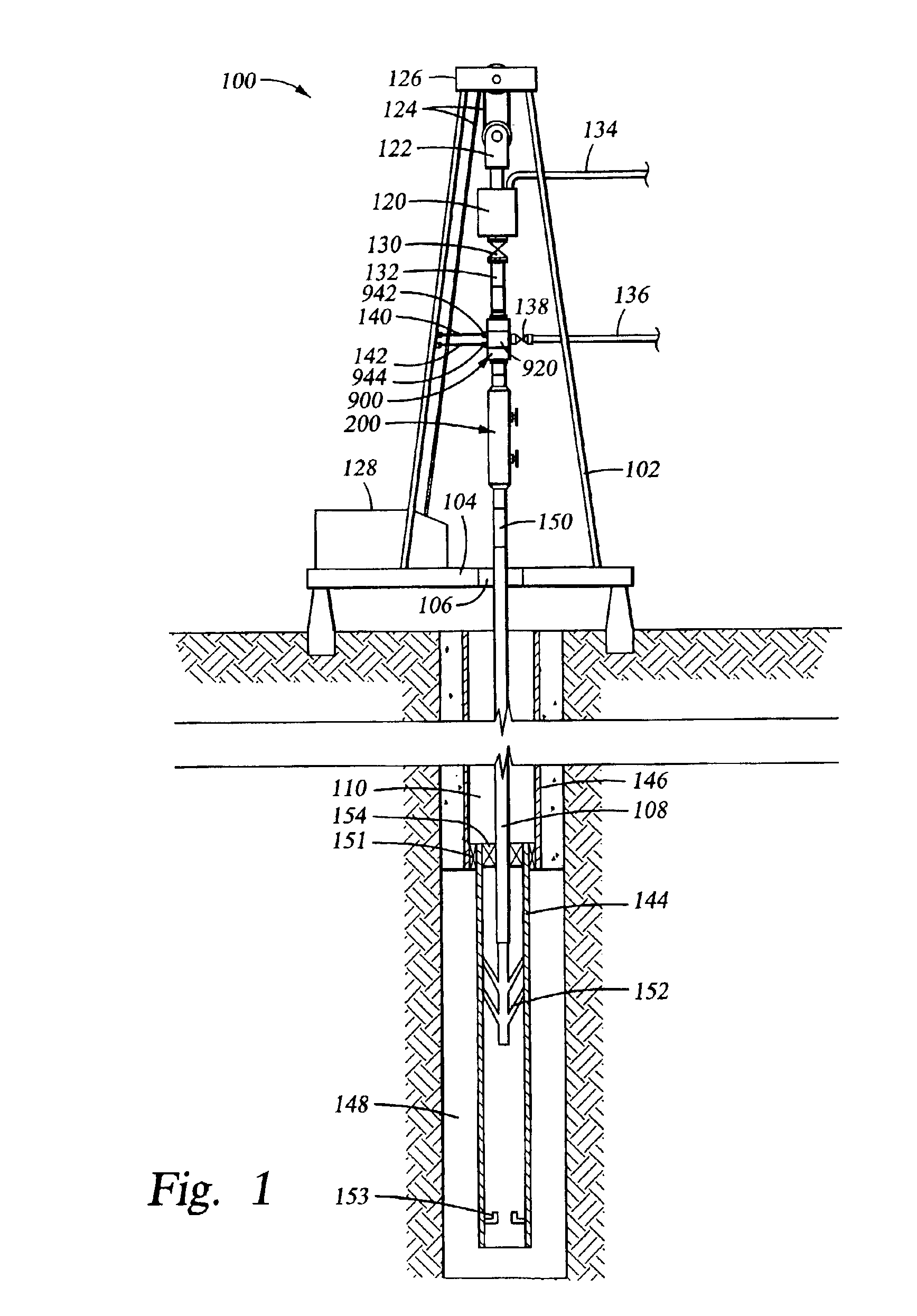Cementing manifold assembly
a cementing manifold and assembly technology, applied in the direction of fluid removal, sealing/packing, borehole/well accessories, etc., can solve the problems of reducing the overall pressure-containing capacity of the cementing manifold, and affecting the operation of the well
- Summary
- Abstract
- Description
- Claims
- Application Information
AI Technical Summary
Benefits of technology
Problems solved by technology
Method used
Image
Examples
Embodiment Construction
[0039]Preferred embodiments of the invention are shown in the above-identified Figures and described in detail below. In describing the preferred embodiments, like or identical reference numerals are used to identify common or similar elements.
[0040]FIG. 1 schematically depicts an exemplary drilling system in which the present invention may be utilized. However, one of ordinary skill in the art will understand that the preferred embodiments are not limited to use with a particular type of drilling system. The drilling rig 100 includes a derrick 102 with a rig floor 104 at its lower end having an opening 106 through which drill string 108 extends downwardly into a well bore 110. The drill string 108 is driven rotatably by a top drive drilling unit 120 that is suspended from the derrick 102 by a traveling block 122. The traveling block 122 is supported and moveable upwardly and downwardly by a cabling 124 connected at its upper end to a crown block 126 and actuated by conventional pow...
PUM
 Login to View More
Login to View More Abstract
Description
Claims
Application Information
 Login to View More
Login to View More - R&D
- Intellectual Property
- Life Sciences
- Materials
- Tech Scout
- Unparalleled Data Quality
- Higher Quality Content
- 60% Fewer Hallucinations
Browse by: Latest US Patents, China's latest patents, Technical Efficacy Thesaurus, Application Domain, Technology Topic, Popular Technical Reports.
© 2025 PatSnap. All rights reserved.Legal|Privacy policy|Modern Slavery Act Transparency Statement|Sitemap|About US| Contact US: help@patsnap.com



